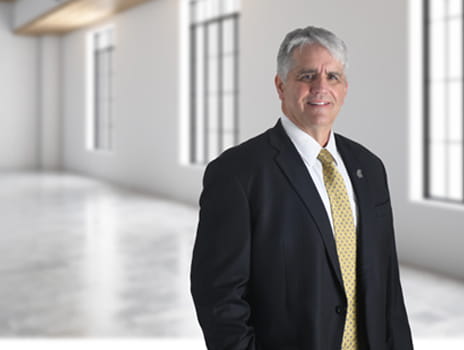- Home
- Research
- Research that Transforms
- Beyond the Bench
- Beyond the Bench 2021
Beyond the Bench

2021 Cancer Research Highlights
In 2021, we marked the 50th anniversary of the passage of the National Cancer Act. In reflecting on this landmark legislation, I am in awe of how far we have come. From 1991 to 2018, the U.S. cancer death rate fell more than 30%. Our knowledge of cancer’s biology builds every day, but there is more to do. Last year nearly 1.9 million people received a cancer diagnosis.
The National Cancer Institute’s (NCI) Cancer Centers Program came from the Act. The University of Kansas Cancer Center and other NCI-designated centers are the backbone of the research enterprise. We must undergo a rigorous renewal process every five years to maintain our designation. In September 2021, the cancer center submitted its 1,700-page application for NCI renewal and requested comprehensive status. There are only 52 cancer centers with comprehensive status, the most elite designation granted by the NCI. Comprehensive status would help us obtain more research funding, recruit and retain more world-class researchers and physicians and positively impact more people with cancer. Whatever the outcome, we remain committed to conquering all cancers.
Comprehensive status would help us obtain more research funding, recruit and retain more world-class researchers and physicians and positively impact more people with cancer. Dr. Roy Jensen
Featured on the cover is Dr. David Akhavan, a physician-scientist. I often say that physician-scientists are a “rare breed” in medicine; they represent less than 2% of all clinicians. Dr. Akhavan is a radiation oncologist, and he researches the use of CAR T-cell therapy to treat one of the most devastating cancers, glioblastoma, a type of brain cancer. Translational physician-scientists like Dr. Akhavan straddle the clinic and laboratory to identify important unmet needs in healthcare.
The National Cancer Act catalyzed a coordinated approach to address cancer. Today we understand factors, such as the BRCA1 and BRCA2 gene mutations and tobacco use, that put us at greater risk of developing cancer. Mammograms and colonoscopies detect cancer earlier when it’s easier to treat. We can engineer T-cells to recognize and attack cancer. A vaccine prevents infection of the human papillomavirus, the primary culprit of cervical cancer. Five decades ago, we didn’t know this was possible. What will the next 50 years bring? I can’t wait to find out.
Take care,
ROY A. JENSEN, MD
Vice Chancellor and Director, The University of Kansas Cancer Center
Director, Kansas Masonic Cancer Research Institute
ROY A. JENSEN, MD
Vice Chancellor and Director, The University of Kansas Cancer Center
Director, Kansas Masonic Cancer Research Institute